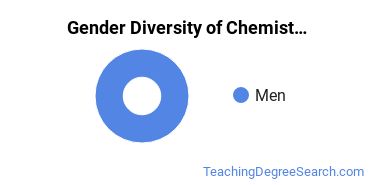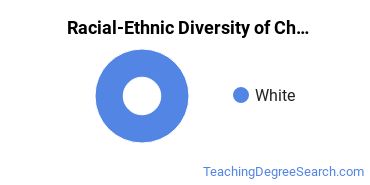Chemistry Education at University of Rochester
If you plan to study chemistry education, take a look at what University of Rochester has to offer and decide if the program is a good match for you. Get started with the following essential facts.University of Rochester is located in Rochester, New York and has a total student population of 11,741.
Want to know more about the career opportunities in this field? Check out the Careers in Chemistry Education section at the bottom of this page.
University of Rochester Chemistry Education Degrees Available
- Master’s Degree in Chemistry Teacher Education
University of Rochester Chemistry Education Rankings
Chemistry Teacher Education Student Demographics at University of Rochester
Take a look at the following statistics related to the make-up of the chemistry teacher education majors at University of Rochester.
University of Rochester Chemistry Education Master’s Program

The following table and chart show the race/ethnicity for students who recently graduated from University of Rochester with a master's in chemistry teacher education.

| Race/Ethnicity | Number of Students |
|---|---|
| Asian | 0 |
| Black or African American | 0 |
| Hispanic or Latino | 0 |
| White | 1 |
| International Students | 0 |
| Other Races/Ethnicities | 0 |
Related Majors
- Science Education
- Physics Education
- Social Studies Education
- Mathematics Education
- Reading Teacher Education
Careers That Chemistry Teacher Education Grads May Go Into
A degree in chemistry teacher education can lead to the following careers. Since job numbers and average salaries can vary by geographic location, we have only included the numbers for NY, the home state for University of Rochester.
| Occupation | Jobs in NY | Average Salary in NY |
|---|---|---|
| High School Teachers | 74,830 | $85,300 |
| Middle School Teachers | 39,950 | $83,490 |
| Education Professors | 5,590 | $88,580 |
| Chemistry Professors | 2,270 | $102,260 |
References
*The racial-ethnic minorities count is calculated by taking the total number of students and subtracting white students, international students, and students whose race/ethnicity was unknown. This number is then divided by the total number of students at the school to obtain the racial-ethnic minorities percentage.
- College Factual
- National Center for Education Statistics
- O*NET Online
- Image Credit: By Tomwsulcer under License
More about our data sources and methodologies.
